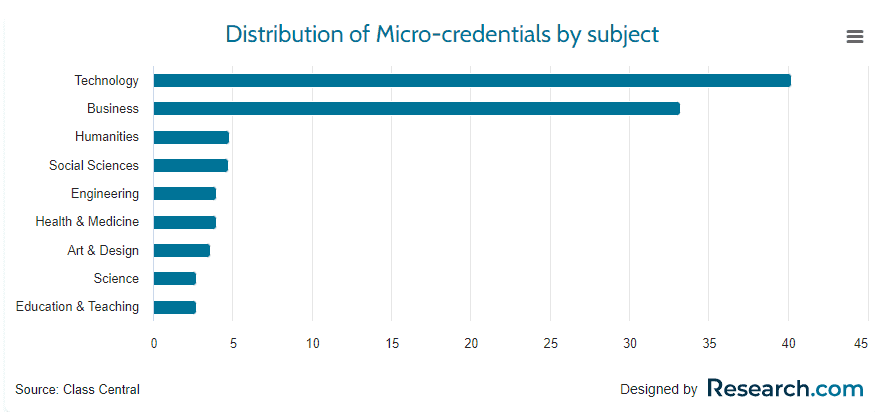
These talking points highlight the potential of adaptive learning systems to democratize education and create equitable learning opportunities for students anywhere.
Tailoring Education to Individual Needs.
As you probably know, education is undergoing a massive transformation, particularly since the covid dramas, which drove the rise of online learning. The increasing adoption of technologies like Artificial Intelligence (AI) and Machine Learning (ML), over the past couple of years have boosted this trend. This shift marks a move away from the traditional “one-size-fits-all” approach towards personalized learning, where the educational journey is tailored to the unique needs and preferences of each learner.
1. The Shift from One-Size-Fits-All to Customized Education Paths
Traditionally, education has followed a statist standardized curriculum, assuming a homogenous learning pace and style for all students. This approach often fails to acknowledge individual learning differences, leading to disengagement and difficulty for some students.
Personalized learning challenges this idea, advocating for a flexible and adaptive approach that caters to individual strengths, weaknesses, and learning styles. This can involve:
- Customizing content and assessments based on individual mastery levels.
- Providing learners with choice in how they learn and what they learn, offering interactive activities, videos, or reading materials.
- Curating learning pathways that cater to individual goals and aspirations.
This shift empowers learners to take ownership of their education, fostering motivation and engagement
2. How AI and Machine Learning are Shaping Personalized Curriculums
AI and Machine Learning are revolutionizing personalized learning by enabling data-driven insights into individual student needs. These technologies can:
- Analyze student performance data to identify strengths and weaknesses.
- Recommend learning materials based on individual progress and learning style.
- Adapt the difficulty level and pace of instruction based on student performance.
- Provide real-time feedback to support learning throughout the process.
AI and ML, educators can create dynamic learning experiences that can continuously adapt to individual student needs, meaning that the student is happier with what and how they are learning, leading to better employment opportunities for students.
Related Article Here
3. Benefits of Adaptive Learning Systems in Online Education
Adaptive learning systems, powered by AI and ML, offer a range of benefits:
- Micro Specialization: Popular with Technology courses. You can be qualified with hands experience, employed in a relevant position and earning high 5 or low 6 figures all within 12 months or less.
- Increased engagement: Students receive personalized content and challenges, keeping them motivated and engaged.
- Improved mastery: Adaptive systems identify areas requiring additional support and tailor instruction accordingly.
- Efficient learning: Students spend less time on content they already understand and more time on areas needing reinforcement.
- Differentiated instruction: Educators can cater to diverse learning styles and abilities within a single class.
This is type of learning has already been adopted by various adult learning colleges and students are enjoying massive benefits, such as moving into higher paid positions more quickly, using the knowledge gained from as little as six months of intense learning and hands on application.

The top two trends in the graph above by far, are Technology and Business.
Transforming Education with Immersive Technologies
Online education is extending beyond traditional virtual classrooms, making greater use of immersive technologies like Virtual Reality (VR) and Augmented Reality (AR) to create engaging and interactive learning experiences, most which can be done from the comfort of the students own home.
1. Integrating Immersive Technologies in E-Learning
Immersive technologies redefine the way we learn online, offering:
- VR experiences: Where learners are taken to virtual reality environments, allowing them to practice skills in a safe and controlled setting. For example: A medical student virtually performing surgery or a history student exploring ancient civilizations firsthand.
- AR overlays: That enhance the real world with digital information. Students can visualize complex concepts, dissect virtual models, or receive real-time feedback on their work through AR applications.
These technologies allow learners to get past the limitations of traditional learning and experience learning material in a more immersive and interactive way.
2. The Rise of Virtual Reality (VR) and Augmented Reality (AR) in Online Courses
The use of VR and AR in online courses is growing, with several institutions already incorporating these technologies:
- University of Southern California’s Institute for Creative Technologies: Uses VR simulations to train soldiers and first responders in various scenarios.
- Arizona State University: Offers a VR course in marine biology, allowing students to explore virtual coral reefs and marine ecosystems.
- Purdue University: Employs AR applications in engineering courses, enabling students to interact with 3D models of machines and equipment.
3. Gamification: Making Learning Engaging and Interactive
Gamification is the application of game design elements to non-game contexts, including education, by incorporating points, badges, leaderboards, and challenges.
Gamified learning can:
- Increase motivation and engagement by making learning fun and competitive.
- Promote active participation and encourage learners to take ownership of their learning journey.
- Provide immediate feedback and reinforce learning through rewards and recognition.
Gamification can be used alongside immersive technologies or implemented in other online learning platforms, making learning more interactive for students.
4. Real-world Applications and Simulations for Hands-on Experience
Online education is generally considered as talking the walk without walking the talk. However as I mentioned above, Immersive technologies and simulations allow students to apply their learning to real-world scenarios, without the need to travel (sometimes great distances):
- Practice job-specific skills in a safe virtual environment, such as piloting a plane or performing a scientific experiment.
- Experience the consequences of decisions in a simulated environment, fostering critical thinking and problem-solving skills.
- Gain valuable hands-on experience that may not be readily accessible in traditional learning settings.
This practical application of knowledge deepens understanding which, when included with an internship, prepares learners for real-world challenges, straight out of college.
5. The Potential Impact on Retention Rates and Student Satisfaction
Studies suggest that incorporating immersive technologies and gamified elements in online learning can lead to:
- Improved student engagement and motivation.
- Enhanced learning outcomes and knowledge retention.
- Increased student satisfaction with the learning experience.
These findings highlight the potential of these approaches to improve the overall quality of online education and make it more effective and engaging for learners.
6. Changing the Focus to Specific Specializations Rather Than Complete Degrees
The rise of personalized learning and immersive technologies is paving the way for a shift towards micro-credentials and specialized learning paths. Instead of pursuing full degrees, individuals can focus on acquiring:
- In-demand skills relevant to specific job roles or career goals, short circuiting the path to better paid work.
- Stackable credentials that demonstrate proficiency in specific areas.
- Continuous learning opportunities to stay updated in rapidly evolving fields.
This trend caters to the growing demand for flexible and personalized learning, allowing individuals to tailor their education to their specific needs and career aspirations.
Bridging the Gap: Towards Equitable and Accessible Online Education
While online education offers immense opportunities for personalized and engaging learning, ensuring access and equity for all students remains a difficult challenge.
Telecommunications giant, Verizon, already awarded $1 million to universities and organizations to start bringing these use case scenarios into reality (Verizon, 2019).
1. Ensuring Access and Equity in the Digital Classroom
Digital equity refers to the equal opportunity to participate in online learning, regardless of socioeconomic background, location, or disability.
Several challenges hinder equitable access:
- The digital divide: Lack of access to reliable internet connectivity and devices can prevent students from participating in online learning.
- Accessibility considerations: Learning platforms and materials must be accessible to students with disabilities, ensuring everyone can engage meaningfully.
- Socioeconomic disparities: Students from disadvantaged backgrounds may lack the resources and support systems necessary to thrive in an online learning environment.
Overcoming these difficulties is more than a challenge, as you have to overcome religious dogmas, ideology, educational restrictions on certain classes of people, corrupt governments and societal customs among a myriad of other problems.
2. Overcoming the Digital Divide for Widespread Access to Online Education
Several strategies can help bridge the digital divide:
- Government initiatives: Investments in expanding broadband infrastructure and providing subsidized devices so low-income families can ensure wider access.
- Community partnerships: Collaboration with libraries, community centers, and non-profit organizations can provide access to technology and video learning resources.
- Creative solutions: Utilizing low-bandwidth learning platforms, and exploring offline learning options can cater to students with limited internet connectivity.
Many first world countries still experience problems with reliability and sometimes the policies their governments implement without rigorous consultation only make the problems worse.
For less fortunate countries it has to be a “one step at a time” approach to ensure that online education is not limited to a privileged few.
3. Strategies for Inclusive Education that Caters to Diverse Learning Needs
Building an inclusive learning environment requires catering to the diverse learning styles and needs of all students.
This can involve:
- Providing flexible learning options: Offering asynchronous learning opportunities and diverse instructional materials cater to different learning paces and styles.
- Incorporating universal design principles: Ensuring learning platforms and materials are accessible to individuals with disabilities through features like closed captions, screen reader compatibility, and text-to-speech conversion tools.
- Integrating differentiated instruction: Utilizing adaptive learning technologies and personalized learning strategies to address individual needs and learning goals.
While these learning methods are meant to help with student outcomes, it is still up to the student to be disciplined enough to take advantage of them.
4. The Role of Policy and Government in Supporting Equitable Online Education
Policy and government support needs serious dedication to improving equitable online education. South Korea, China, and the United States have been leading developments in 5G technology, and India has climbed 49 places on the Speedtest Global Index™ since launching 5G, from 18th in September 2022.
There is still more countries can do.
This can involve:
- Developing and implementing policies in the public domain, that ensure access to technology and internet resources for all students.
- Providing funding assistance for schools and educators to implement online learning strategies and professional development opportunities.
- Collaborating with stakeholders like technology companies, non-profit organizations, and community leaders to develop and implement effective solutions.
Through active involvement (rather than just throwing money at it), governments can play a useful role in ensuring equitable access to quality online education for all.
5. Preparing Educators for a More Accessible and Fair Online Learning Environment
Most Educators like to see students do well and and advance their education. As with most serving professions they need help to do the best job they can.
Often the complaint from those in many institutions is the time they spend attending pointless meetings.
Creating a online education programme needs to broaden its focus and include:
- Professional development opportunities to equip educators with the skills and knowledge to integrate technology and utilize inclusive teaching practices in online settings.
- Building cultural competency to understand and address the diverse needs and backgrounds of students in the online classroom.
- Developing strong communication and collaboration skills to effectively support students and foster a sense of community in online learning environments.
Investing in educator training and support has to be a priority. Educators are no different to any other profession and ongoing development needs to be made available so they can keep up with the changing face of technology.
6. Cost Structures
Cost is the big barrier to overcome in implementing online learning technologies to ensuring access for all. This includes:
- Technology infrastructure and software costs: The cost of acquiring and maintaining learning platforms, immersive technologies, and other tools.
- Professional development: The cost of training educators on integrating technology and implementing inclusive practices in online learning.
- Student access: Ensuring all students have access to necessary devices and internet connectivity can involve subsidized programs or partnerships.
Finding sustainable cost solutions needs to be balanced to ensuring that online education remains accessible and affordable for all learners.
As we are now seeing, many courses are being broken down to specialities and this is helping students obtain well paid work without the massive cost of going through a multiple year programme, making it easier for them to move onto further studies and advance their career.
Additional IT Training Article here
Another here











Your analysis of the future trends in online education is both insightful and thought-provoking. I appreciate your exploration of emerging technologies like AI and VR in the education sector. How do you think these innovations will impact accessibility for learners worldwide? I’ve personally experienced the benefits of online courses, especially in terms of flexibility and convenience.
Your discussion on personalized learning and adaptive platforms resonates with my own experiences. Tailoring education to individual needs and learning styles can truly revolutionize the way we approach knowledge acquisition. However, I’m curious about potential challenges in implementing such personalized approaches on a larger scale. How do you see educators and institutions adapting to ensure quality and consistency in personalized learning environments? Your insights shed light on the exciting possibilities and necessary considerations in the evolving landscape of online education.